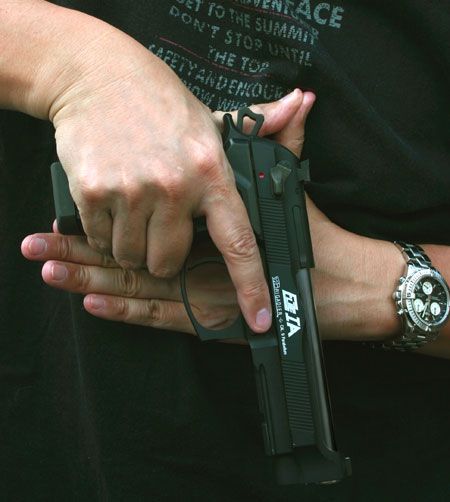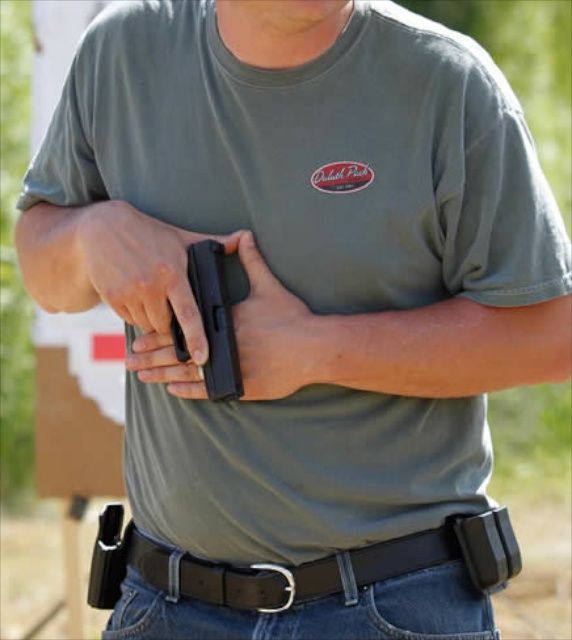At the risk of getting flamed, . . . let me just throw an opinion here: if you have to look at your holster to make sure you are putting your weapon in it without shooting your leg, butt, or other hand, . . . you are in definite need of some serious equipment, . . . some serious training, . . . and probably a good dose of self confidence.
A good holster, IWB, OWB, shoulder, or even a thigh rig, . . . should be easily entered with one hand, . . . in the pitch black of the darkest night.
But then again, if you bought one of those $12.95 Uncle Mike Nylon, . . . well, . . . you got what you paid for. Same goes for the $15 half leather, half kydex piece of trash you bought at the gun show, . . . and he even made it in his toaster oven as you watched.
Take a day off of fishing, . . . bowling, . . . shooting pool with your buddies or whatever else you do for fun, . . . spend it getting acquainted with your firearm, your holster, your cover garment, . . . and just maybe, . . . go buy some decent equipment.
May God bless,
Dwight
A good holster, IWB, OWB, shoulder, or even a thigh rig, . . . should be easily entered with one hand, . . . in the pitch black of the darkest night.
But then again, if you bought one of those $12.95 Uncle Mike Nylon, . . . well, . . . you got what you paid for. Same goes for the $15 half leather, half kydex piece of trash you bought at the gun show, . . . and he even made it in his toaster oven as you watched.
Take a day off of fishing, . . . bowling, . . . shooting pool with your buddies or whatever else you do for fun, . . . spend it getting acquainted with your firearm, your holster, your cover garment, . . . and just maybe, . . . go buy some decent equipment.
May God bless,
Dwight


